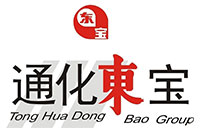Contact:
4008465777
Tonghua Dongbao: Clinical trial application for THDBH151 Tablets approved
Recently, Dongbao Zixing (Hangzhou) Biopharmaceutical Co., Ltd. (“Dongbao Zixing”), a wholly-owned subsidiary of Tonghua Dongbao Pharmaceutical Co., Ltd. (the “Company” or “Tonghua Dongbao”) received the notice of approval (No. 2022LP02056, 2022LP02057, and 2022LP02058) from the Center for Drug Evaluation of the National Medical Products Administration (NMPA) for the clinical trial of its novel dual-target inhibitor for gout (THDBH151 Tablets).
There is a pressing need for effective and safe gout and hyperuricemia drugs among patients in China. In response, the Company has actively pursued the development of innovative gout medicines with significant efficacy and high safety to address unmet clinical needs. The approval of the clinical trial for THDBH151 marks a new phase in Tonghua Dongbao’s R&D efforts in the field of gout/hyperuricemia.
About THDBH151 tablets
THDBH151 is a dual-target inhibitor for gout. Due to its special mechanism of action, it can both reduce uric acid production by inhibiting xanthine oxidase (XO) and increase uric acid excretion by inhibiting the URAT1 transporter in the renal tubules. This mechanism improves efficacy and reduces side effects, leading to significantly higher medication adherence. THDBH151 has the potential to become the best-in-class drug of its kind. There are no similar products available on the market in China or worldwide.
Currently, gout treatments include XO inhibitors (allopurinol and febuxostat) that target xanthine oxidase to reduce uric acid production and URAT1 inhibitors (benzbromarone and lesinurad) that inhibit the reabsorption of uric acid. Both types of drugs have room for improvement in effectiveness and safety.
About gout and hyperuricemia
The prevalence of gout and hyperuricemia has obviously increased in China, especially among young people, in recent years. Hyperuricemia has become the fourth most common metabolic disorder, following diabetes, hypertension, and hyperlipidemia. Gout has also become the second most common metabolic disease after diabetes. According to the Chinese Guidelines for the Treatment of Hyperuricemia and Gout (2019) and data from the 6th national population census conducted by the National Bureau of Statistics, the overall prevalence of hyperuricemia in China is 13.3%, with approximately 177 million patients, while the overall prevalence of gout is 1.1% with about 14.66 million patients. A Frost & Sullivan analysis reveals that the number of people in China with hyperuricemia and gout will continue to increase, respectively reaching 239 million and 52.2 million in 2030, and the Chinese gout drug market is expected to grow to RMB 10.8 billion.
The Company will accelerate the development of THDBH151 tablets (a dual-target inhibitor for gout) and THDBH130 tablets (a URAT1 inhibitor) that have high clinical value for patients with gout and hyperuricemia. In addition, the Company will continue to expand into the field of endocrinology to create new growth drivers that can complement its existing business and drive high-quality business growth.










